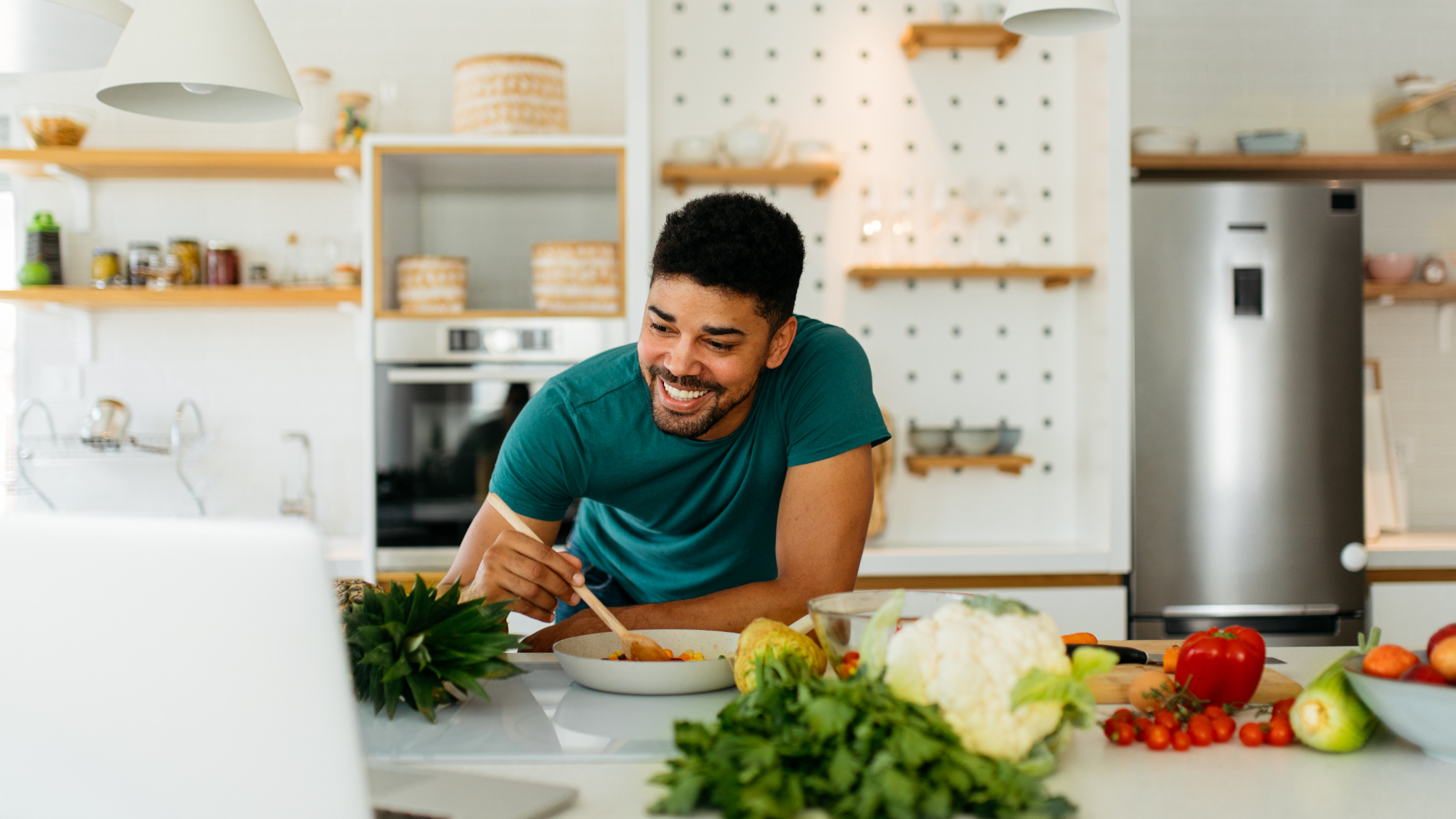Wondering how to go vegan? Use these six tips to switch to a plant-based diet
We spoke to the experts to get their top tips on how to go vegan

A significant dietary change can be a big step for anyone, but if you're wondering how to go vegan, you're probably already aware of how overwhelming the switch can be.
However, there are some steps you can take to make it that bit simpler. For instance, investing in some of the best vegan cookbooks can make it easier to find delicious alternatives or new meals to experiment with when cooking at home.
But to ease you into things, we spoke to two experts — dietitian Rosie Martin and Holly Heasman-Durham, a nutrition coach — about how to go vegan and some of their top tips to make the transition as straightforward as possible.

Holly Heasman-Durham is a nutrition coach for the workout app Shreddy and an L3-certified personal trainer. She believes a holistic approach works best, blending physical, nutritional, social, and mental health.

Rosie Martin is a registered dietitian and member of Plant-Based Health Professionals. She has followed a whole-foods vegan diet since 2014 for nutritional, environmental, and animal welfare reasons. This motivates her to share the power of plants for health, happiness, sustainability, and compassion.
1. Understand your motivation
According to Martin, thinking about your motivation for going vegan is vital. "[It] will be personal to you. It could be for reasons related to your health, the environment, or the animals, amongst others. Do some research and really understand the difference diet can make."
"This will help with your motivation to stick with it. While you're there, why not research some of the other reasons too? This can also help with questions you might get from others about your diet," she explains.
Heasman-Durham agrees: "Understanding your motivation is at the crux of any successful lifestyle change. Maybe you want to broaden your diet or reduce your environmental footprint; whatever it is, it's important. [Remember] the 'why' and stay in touch with your motivation."
2. Make changes gradually
If you're not ready to go fully vegan, you might prefer taking small steps towards it. "Perhaps this week you can switch out dairy milk for plant-based milk? Or maybe try Meat-free Mondays," suggested Heasman-Durham.
Get the Fit&Well Newsletter
Start your week with achievable workout ideas, health tips and wellbeing advice in your inbox.
"It's absolutely fine to have a transitional phase, and in fact, it will probably be a much more enjoyable journey." If you're going from a fully omnivorous diet, consider vegetarianism as a step on your journey.
While there are differences between vegan and vegetarian diets, transitioning to a veggie diet first can be a great place to start if you want to cut out meat and fish and get used to cooking without them. Martin added you can start with the more straightforward switches this way.
"Instead of picking up the cow's milk or yogurt, go for a soya version," she said. "Pick up the plant-based sausages instead of the meat ones. Choose the vegetable soup that says 'vegan' on it. When you first start out, this can be a useful way to make cutting out animal products simple."
3. Veganize your favorite meals
When you're learning how to go vegan, one of the easiest ways to get some of the many plant-based diet benefits is to make your favorite meals but switch ingredients for vegan-friendly alternatives.
"A vegan diet can feel overwhelming to start with, but you don't have to overhaul everything you eat," said Martin. "There are some simple ways to stick with what you know but with tweaks to make it vegan."
"Use meat-replacement mince or lentils instead of beef in your next Bolognese. Switch chicken for chickpeas in your next coconut curry. Switch butter for a plant-based spread or olive oil on your toast."
4. Eat what you love
It may seem obvious, but you don't have to eat meals or ingredients you don't like just because they're vegan — you can still eat healthily without breaking the bank.
"If you know you hate tofu, don't eat tofu. Start by looking at what you already eat, and you'll likely find some plant-based options, like soups, pasta, sandwiches, and stir-fries, to name a few," said Heasman-Durham.
"If there are certain foods that don't sit within the plant-based fundamentals, get creative and find those swaps that fulfill your cravings," she adds. The priority is to cook delicious food you enjoy if you want to create a sustainable change in the long run.
5. Experiment with new ingredients
"When we think of a change in diet, we immediately jump to restrictive thoughts. Re-frame this to what you can have! Vegetables, fruits, grains, nuts, seeds, beans, legumes! Get creative in the kitchen and discover new tastes, textures, and flavor combinations," said Heasman-Durham.
"Plant-based nutrition doesn't have to mean lettuce leaves with a side of spinach!" It can help to experiment, find what works for you, and set your boundaries. For instance, you might be wondering do vegans eat eggs or if you'll be kicked out of the club.
While eggs don't fit the traditional vegan diet, you may decide that it's okay if you can source eggs locally or have your own backyard hens. Martin agrees that you should focus on what you're adding to your diet instead of what you're taking out.
"This can help with the psychology of changing your diet, creating a mindset of abundance and nourishment," she said. "You could start by increasing the proportion of fruits and veggies on your plate, adding beans or lentils to your stew or curry, or swapping your snacks for something new," Martin adds.
6. Buy a cookbook and plan your meals
According to Heasman-Durham, there are loads of great vegan-friendly resources online and in your local bookstore. "[These] can make your plant-based journey both delicious and exciting. Whatever your cuisine, there will always be a cookbook to support it."
"With so many vegan products now available, it is getting easier to follow a vegan diet, but getting caught out is still possible when you are hungry and need to pick something up in a hurry," said Martin.
"Try to think about your day or week before it has happened; plan a shopping list and a shopping trip. Keeping snacks on you each time you go out can be a great way to avoid getting caught out. Some fruits, nuts, or crackers in your bag could be enough."
"You also find some recipes you love the look of from your new favorite vegan cookbooks. Plan a little time in the kitchen to experiment with new ingredients like tempeh, tahini, nutritional yeast, or cook with new fruit and vegetables you haven't used before," she advised.

Lou Mudge is a Health Writer at Future Plc, working across Fit&Well and Coach. She previously worked for Live Science, and regularly writes for Space.com and Pet's Radar. Based in Bath, UK, she has a passion for food, nutrition and health and is eager to demystify diet culture in order to make health and fitness accessible to everybody.
Multiple diagnoses in her early twenties sparked an interest in the gut-brain axis and the impact that diet and exercise can have on both physical and mental health. She was put on the FODMAP elimination diet during this time and learned to adapt recipes to fit these parameters, while retaining core flavors and textures, and now enjoys cooking for gut health.